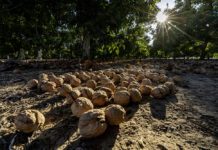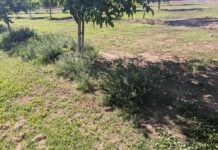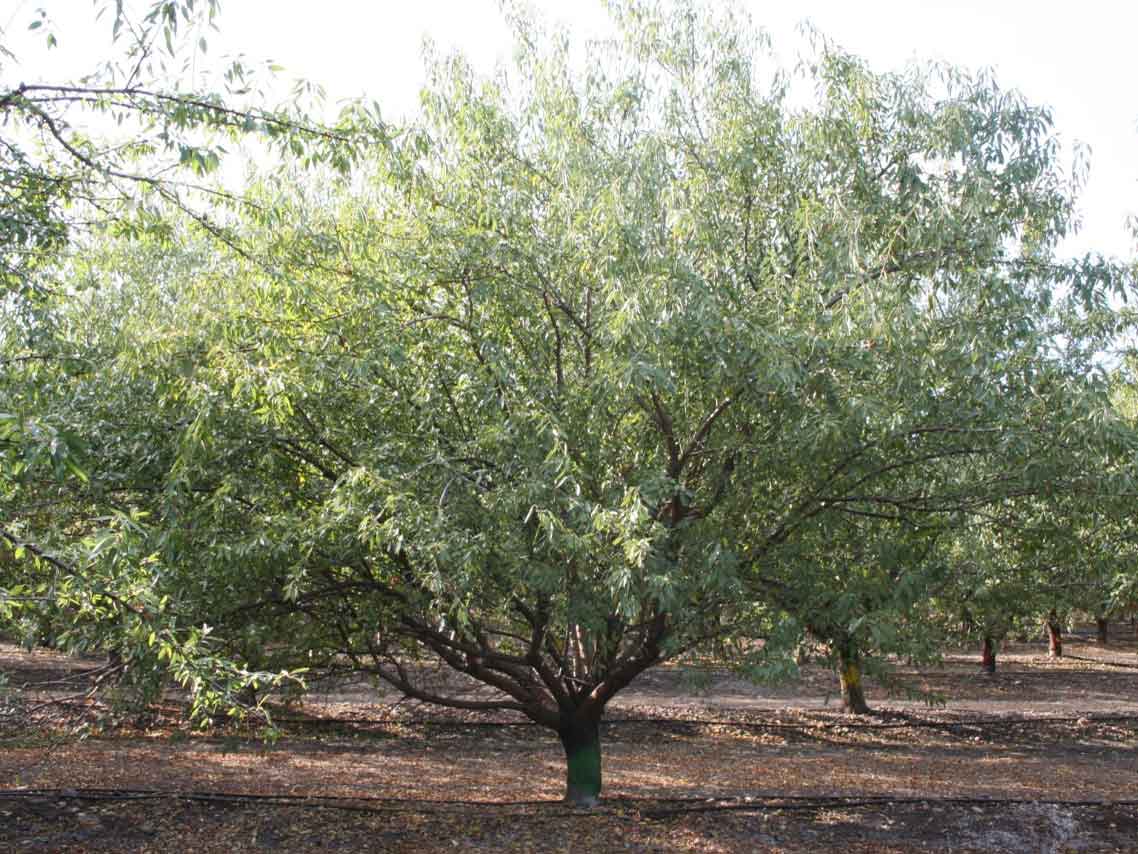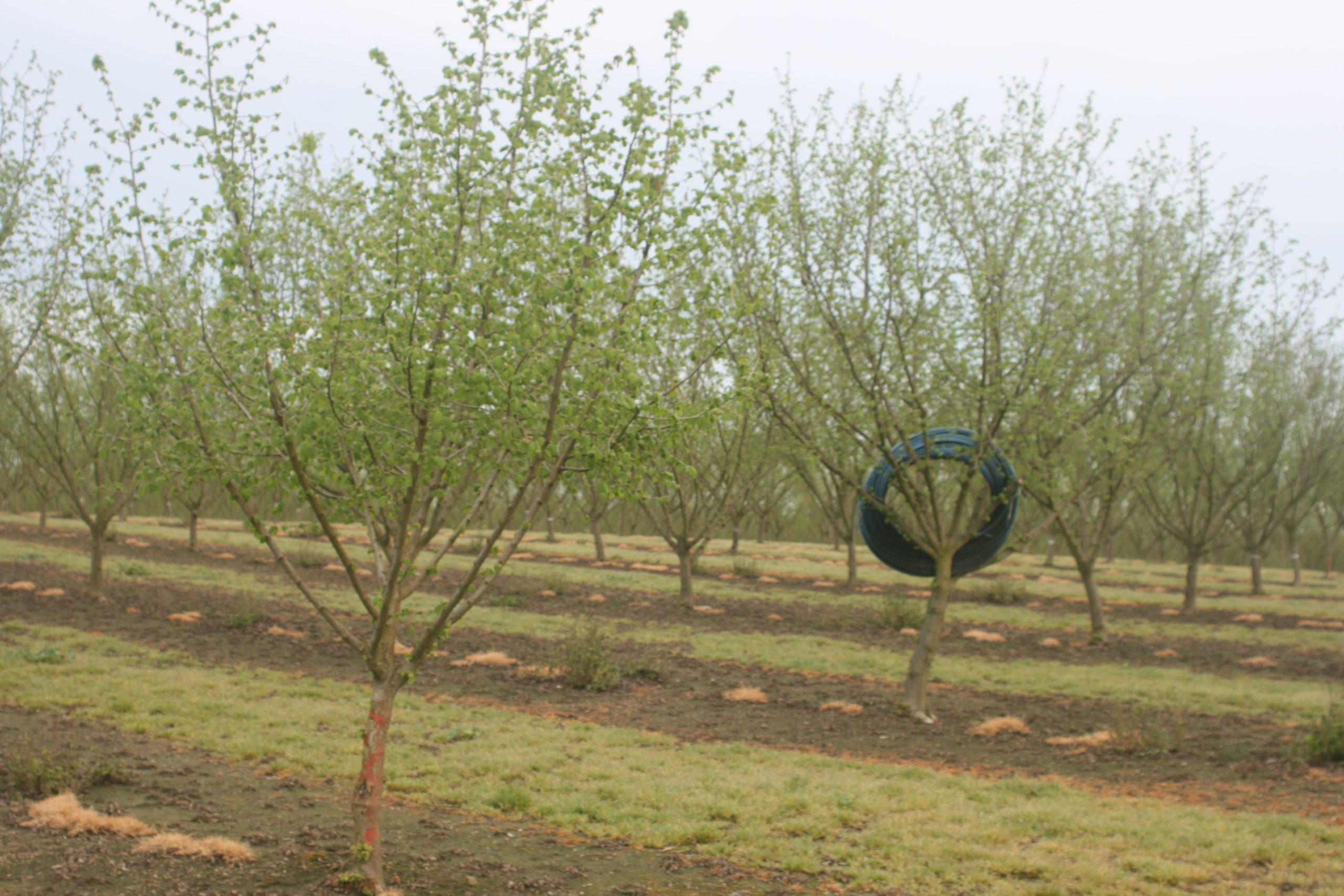
A panel of experts in agricultural financing addressed growers at the North Valley Nut Conference at the Silver Dollar Fairgrounds in Chico, Calif. Interest in the topic came through feedback financial experts received from tree nut growers, managers and owners.
“We have heard from several sources the need for some type of discussion on how growers or farmers can find financial support during challenging times, such as the current atmosphere,” said Domena Agyeman, UC Agriculture and Natural Resources economics advisor for Butte, Glenn and Tehama counties, who introduced the panel and presentation, “When Money Doesn’t Grow on Trees: Practical Tips from Bankers.”
The panel of experts included David Magaña of Rabobank, Rory Crowley of First Northern Bank, Justin Nunes of Golden State Farm Credit and Matt Woolf of Terrain Ag.
Going from a Bottom-to Top-Tier Borrower
The theme of the presentation was “A Tale of Two Nut Farmers,” with Crowley discussing the bottom tier and top tier of what bankers look for in potential borrowers.
He explained the “bottom tier” producer engages in wishful revenue projections, has little to no understanding of production costs, rarely updates their balance sheet, is emotional rather than objective, reactive instead of proactive, does not communicate with their lender and prioritizes expansion over efficiency.
In contrast, Crowley explained, the “top tier” producer has a realistic and informed view of revenues, tracks production costs, maintains frequent contact with their lender, updates their balance sheet and profit-and-loss statement postharvest, diversifies across multiple crops or business types and focuses on improving efficiency before expanding.
He said the bottom-tier producer is seen as a risk to lenders, while the top-tier producer appears profitable.
Crowley then shared how growers can transition from the bottom to the top tier and become more viable to lenders.
“Following a bank calendar like you do operations and using a simple tracking system for costs and revenues on paper goes a long way with lenders,” he added.
A PowerPoint example of a “grower/lender ag calendar” shared a simple outline for “ag operations, crop line renewals, inspections, harvest reporting, bank statements, profit-and-loss tracking and communication with the lender.”
“Follow a calendar for banking like you do for operations,” Crowley said.
Additionally, the following practices are essential for being in a lender’s top-tier bracket:
• The 90-60-30-day rule for submitting financials, underwriting, and loan approval. Ideally, an almond line of credit is funded in January or February, while for walnuts, it is funded in February or March. Producers should begin the renewal process in November for almonds and December for walnuts.
• June or July is a good target for annual crop inspections by the lender.
• Collect and send harvest data in November or December.
• Complete a yearly profit-and-loss statement and balance sheet for the season in December.
• Use a simple tracking system for costs, yields, and prices.
Crowley said, “If it cannot be measured, it cannot be managed,” adding costs and yields should be documented over three to five years.

What Lenders Look for in Borrowers
Next at the lectern was Nunes, who shared three key factors that lenders assess: management, historic performance and credit score.
Under farm management, he said lenders evaluate yields, business plans, marketing strategies and how they compare to industry peers. On the financial side, “quality and accuracy of records, budgets, estate/succession planning and appropriate use of financing” are critical.
Historic performance includes whether the producer pays debts on time, follows through on commitments and provides requested information promptly.
“We also look at how the consumer’s accounts have been handled and whether there is any derogatory information,” Nunes said. “We also assess working capital and the current ratio of assets to liabilities.”
Additionally, lenders consider net worth (equity) and debt-to-equity ratio, with a preference for 1:1 or lower, as well as the debt coverage ratio and income projections vs projected expenses, all of which should be included in the grower’s tracking system for costs and revenues.
Another area of interest to lenders, Nunes said, is collateral, with loan-to-value typically capped at 75%.
“Collateral for long-term loans can be real estate, intermediate-term loans may be secured by equipment or livestock, and operating loans are secured by crops, accounts receivable and inventory, among other assets,” Nunes added.
He said in difficult times, communication and transparency are key responsibilities of potential clients.
“The earlier a problem is identified, the more solutions are available, such as interest-only payments, changes in installment dates, refinances, deferments and forbearances,” Nunes explained. “Additional collateral and guarantees are often necessary.”
Risk ratings are a crucial tool for lenders to evaluate the probability of default.
Nunes said default probability and risk rating are based on the borrower’s financial position and repayment ability.

Almond Pricing and Market Outlook
Magaña ’s discussion focused on almond pricing and future market outlook.
“To say the past few years have been challenging in the almond industry would be an understatement,” he said.
He presented a PowerPoint slide showing annual almond production since 2000-01, when production was about 750 million pounds, increasing steadily to a peak of 3 billion pounds in 2021-22. The current estimate for 2024-25 is 2.75 billion pounds.
“We have rebounded from lean years,” Magaña said. “However, unlike the title of this presentation, ‘When Money Doesn’t Grow on Trees,’ 10 years ago, it seemed that money did grow on trees, as in 2014 prices were at $4 per pound. But in 2021-22, we started to see significant challenges in prices. However, as we all know in agriculture, that’s how things go.”
He then posed the question: What are we expecting for prices in 2024-25, given the third-largest crop on record?
“We expect prices to remain flat,” Magaña said. “But as we are able to move a larger volume, I see a rebound and am optimistic about the estimate. I believe prices will be around $2.40 per pound.”
He shared the lowest pricing year over the past decade was 2022-23, but the industry has been rebounding since then. While not reaching 2022 highs, he expects a slow, steady upward trend.
“Over the next five years, if there are no retaliatory tariffs, I expect prices around $2.40 to $2.50 per pound,” Magaña added. “However, if a negative trend develops, prices may be around $2.20 to $2.25 per pound. A lot will depend on election impacts.”
Walnut Market Trends and Future Expectations
Woolf began his portion by asking, “Is the worst behind us in the walnut market?”
“Ultimately, I think the worst is behind us, but challenges remain,” he said.
“I’m presenting from a high-level, 30,000-foot view, looking at supply and demand.”
Woolf said last year’s global walnut shipments hit a record, though in 2023, the industry carried over 141,000 in-shell tons, more than double the amount in 2019.
“Luckily, by 2024, that number was reduced to 95,000 in-shell tons,” Woolf said. “And that’s impressive considering the 2023 crop was massive.”
He noted that walnut prices in August 2023 were about 20 cents per pound for Chandlers, rising to 70 cents by early 2024.
“So, a lot of upward momentum,” Woolf explained. “Looking ahead, I believe 2023 was pivotal for growers’ bottom lines. As we continue improving, this year’s shorter crop should contribute to upward pricing pressure.”















